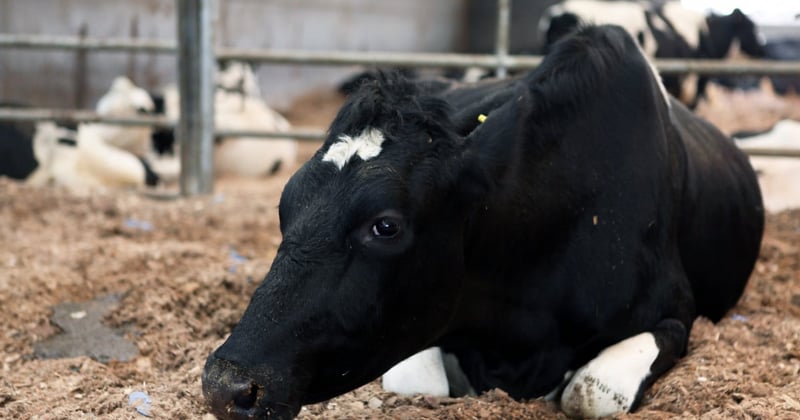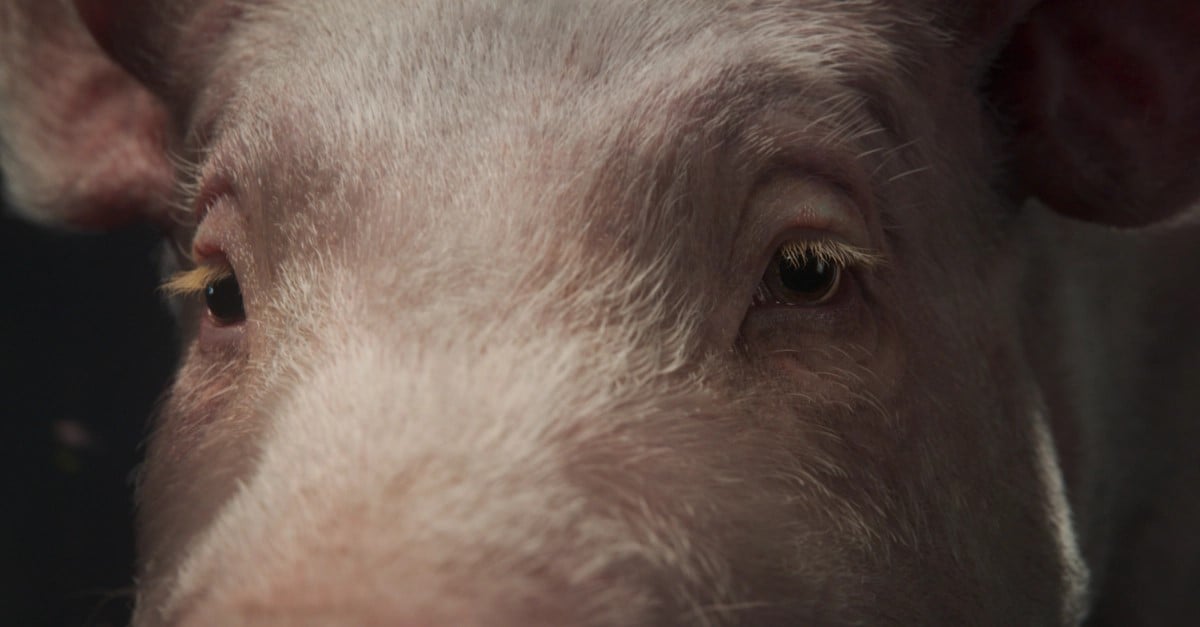
Meet some of the cows who are taking part in our current research into animal sentience. Their curious and complex personalities keep me on my toes every day.
Having spent so much time with cows, one thing has become very clear - they are all unique. At a glance, you may assume they all look and act the same way. But take a closer look, and you realise they all have their own special personalities and unique characteristics.
Affectionate Poppy
Take Poppy for example, a sweet and gentle cow who has taken part in both of our studies. She is one of the most affectionate cows you could meet and loves being stroked. Needless to say, if I was forced to choose a favourite it would be her. Research on dairy cows has shown human contact such as stroking can be beneficial in improving the relationship between people and animals (Schmied et al; 2008).
In our last study, Poppy was very trusting from the start. She enjoyed being stroked so much that she would often put her head in our arms and fall right asleep. Certainly not something I expected! A study by Windschnurer et al (2009) showed that a human stroking a cow during the milking process can evoke a positive reaction.
This year, when I went to the barn to look for any cows I recognised, Poppy strode over and put her head straight into my arms. Every time I go to her pen now, she always comes over to see me.
Harriet's the ruler of the group
While Poppy was the gentle and polite cow in the group, Harriet was the opposite. She took time to warm to us, but once she did we really got to know her. It was clear Harriet ruled the roost - or barn in this case.
She was assertive and didn’t like to wait her turn, insisting on being stroked regardless of whether we were stroking another cow or not. She wouldn't think twice about barging other cows out of her way to take their place. Harriet isn't a cow to mess with, that's for sure.
She's a smart cow too - she'll do anything to avoid being used during teaching sessions. On one occasion, the staff came into the pen to take a few cows for a veterinary lesson. She didn't want to participate, and came to stand between my colleague and I until other cows were chosen instead. After they finished, she returned to the front of the pen to feed. I'm not sure what was going through her head, but I'm sure she knew exactly what she was doing.
Research by Laister (2011) found that hierarchal structures can exist within groups of cattle. Alongside this, it has been found that as well as stroking, social licking within groups of cattle can induce a calming effect on a cow.
Research and animal welfare
Getting to know Harriet, Poppy and all the other the cows is a real bonus to our already fascinating research. They always make us smile and are a constant reminder of the unique and complex personalities that animals have.
For my next posts on this research, I'll be taking a closer look at how learning more about their emotional lives will help benefit the lives of dairy cows all over the world.
More information
To find out more about sentience in cows, you can take a look at some of the following research:
Laister, S., Stockinger, B., Regner, A.-M., Zenger, K., Knierim, U., Winckler, C., 2011. Social licking in dairy cattle- effects on heart rate in performers and receivers. Appl. Anim. Behav. Sci 130, 81–90.
Schmied, C., Boivin, X., Waiblinger, S., 2008a. Stroking different body regions of dairy cows: effects on avoidance and approach behavior toward humans. J. Dairy Sci. 91, 596–605.
Windschnurer, I., Barth, K., Waiblinger, S., 2009. Can stroking during milking decrease avoidance distances of cows towards humans? Anim.Welf. 18, 507–513.
More about our research
Proctor, H. S., & Carder, G. (2014). Can ear postures reliably measure the positive emotional state of cows?. Applied Animal Behaviour Science, 161, 20-27.
Proctor, H. S., & Carder, G. (2015). Measuring positive emotions in cows: Do visible eye whites tell us anything?. Physiology & behavior, 147, 1-6.
Proctor, H. S., & Carder, G. (2015). Nasal temperatures in dairy cows are influenced by positive emotional state. Physiology & behavior, 138, 340-344.

Act now to end factory farming
Food Systems
Subscribe to our newsletter and gear up to make a difference in reshaping the world through the collective strength of people power!
Take action